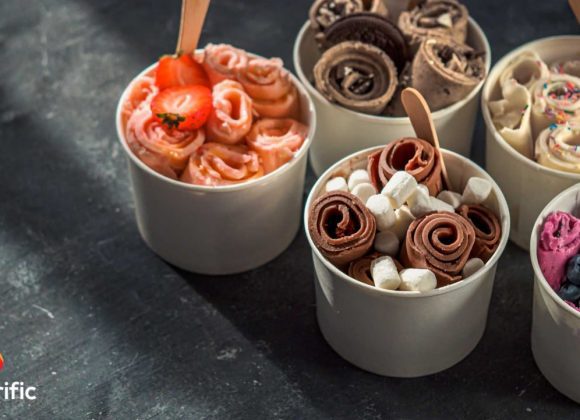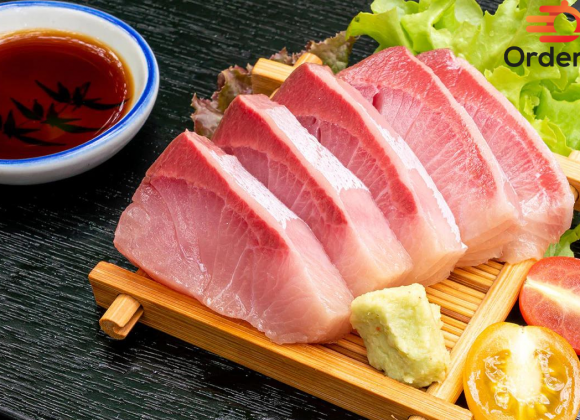Welcome to the epicurean universe of food criticism, a realm where tastebuds reign supreme. If you’re wondering how to become a food critic, you’re in for a delightful adventure. This role involves far more than simply savoring delicious dishes at various restaurants. It requires an in-depth understanding of culinary arts, a sharp eye for food trends, and a polished writing style. Food critics are storytellers, translating their sensory experiences into narratives that captivate readers and influence the food industry. As the next Anthony Bourdain or food blogger, you could shape the culinary world. Embark on this flavorful journey, learning the ins and outs of becoming a successful food critic. From enhancing your writing skills to understanding restaurant etiquette, we’ll guide you through each savory step.
The Art of Food Criticism: Unveiling the Role and Impact
Immersing yourself in the ambiance of a soft opening offers a unique perspective for budding food critics. It’s the restaurant’s dress rehearsal, the first real interaction with the public. Every dish is a debut performance, each flavor a new encounter. Imagine the anticipation, the restaurant teeming with life for the first time.
As a food critic in the making, you gain invaluable insights into the operations of a new food establishment. Observe the chef, their precise movements, the sizzle and aroma filling the air. Notice the buzz in the room, the clinking cutlery, the muffled conversations, and the soft, warm lighting. It’s all part of the culinary symphony unfolding right before you.
In this setting, you’ll witness firsthand how food trends are born. The soft opening is a stage for innovation, where new dishes meet public opinion. Here, you can sense a restaurant’s potential to impact the food industry.
Dive deep into this experience as part of your journey to become a food critic. Relish the opportunity to practice your food writing. Jot down your observations, your sensory experiences, and your impressions. Remember, your words can transport your readers into this world.
Soft openings are a gateway into the unseen aspects of a restaurant operation. As a restaurant critic, attending these events is essential in understanding the dynamics of the food industry. Hence, for those wondering how to become a food critic, immersing in soft openings is a stepping stone to a successful food critic’s journey.
Culinary Enthusiast to Food Critic: Charting Your Path
Soft openings present a golden opportunity for budding food critics. Imagine stepping into an uncharted restaurant teeming with anticipation. The murmur of excited chatter fills the air, punctuated by the intermittent clink of cutlery. Behind the scenes, the aroma of culinary creation wafts from the kitchen, enticing your senses. Soft openings are a sensory adventure, an immersion into the essence of a new food establishment.
In this vibrant setting, observe the chef, a maestro conducting a symphony of flavors. Every precise movement, every sizzle, and sear is a performance caught in the crucible of creation. Food trends are born in these moments, where innovation meets public scrutiny and acceptance. As an aspiring food critic, there’s nothing quite like the thrill of being a part of this inaugural spectacle.
Soft openings are not just about the food; they are a microcosm of the restaurant industry. They offer a sneak peek into the operational aspects of running a successful restaurant. From gauging customer behavior to understanding the intricacies of service, it’s a crash course in culinary arts and food industry dynamics.
As you embark on your journey to become a food critic, remember to document your insights. The restaurant critic in you should capture the sensory experiences, distilling them into compelling narratives. Your words can transport your readers to the heart of the culinary extravaganza unfolding before your eyes. Attending soft openings is a vital stepping stone in mastering the art of food criticism.
Developing Your Palate: The Importance of Tasting Experience
Developing your palate is a fundamental step in becoming a food critic. It isn’t just about relishing the flavors but understanding them. Each taste reveals a narrative, a story of ingredients and preparation. Every element plays a part, from the chef’s expert hand to the fresh local produce.
Firstly, start by savoring a variety of cuisines. Experience is an invaluable teacher in the culinary arts. It introduces you to new flavors and cooking techniques, broadening your gastronomic understanding. For instance, explore Thai cuisine’s delicate balance of sweet, sour, salty, and spicy. Moreover, delve into the rustic charm of Italian food, where simplicity cements its grandeur.
Secondly, learn to discern subtleties. A successful food critic can identify individual ingredients in a dish. Therefore, practice by tasting meals blindfolded. Pick out the hints of coriander in a curry or the nuttiness of roasted buckwheat. Over time, you’ll notice an improvement in your tasting skills.
Thirdly, appreciate the role of texture. It contributes as much to the dining experience as the taste does. Recognize the crunch of fresh lettuce or the creaminess of well-made béchamel. Remember, a pleasant texture can elevate a dish from ordinary to extraordinary.
Finally, take notes on your impressions. Food writing is an integral part of being a food critic. Reflect on the dishes you sample and pen down your thoughts. Over time, your food reviews will become more nuanced and informative. As you explore and learn, remember to enjoy the journey. After all, the world of food criticism is as delicious as it is intriguing!

Honing Your Writing: Crafting Engaging and Insightful Reviews
Embarking on becoming a food critic, mastering the art of food writing is pivotal. Imagine yourself seated at a bustling restaurant. The tantalizing aroma of freshly prepared dishes wafts through the air. Your task? Translate this vivid experience into words.
Start by channeling your observations into your writing. Describe the crackle of a perfectly cooked crispy duck or the silky texture of a delicately layered mille-feuille. Your insights should captivate the reader, immersing them into the world of the food establishment you’re critiquing.
Pay attention to the details. The way the waiter describes the chef’s special, the elegant plating, the lively ambiance – every element adds color to your review. Through your words, the reader should feel like they are dining with you, sharing the experience firsthand.
However, more than writing skills are needed. Balancing the artful description with a critical meal analysis is essential as a food critic. Is the steak overcooked? Does the tangy raspberry sauce complement the rich chocolate ganache in the dessert? Your review should provide valuable insights to the reader, aiding their decision-making process when choosing a restaurant.
Remember, every word you pen influences public opinion about a restaurant or a specific dish. So, hone your writing to be engaging, insightful, and, most importantly, honest. Amid all this, remember to enjoy the process. After all, you’re on a flavorful journey, relishing the delights of the culinary world while guiding others through your writing.
Mastering Food Photography: Visual Storytelling in Critiques
Visual storytelling is a vital skill in the journey of how to become a food critic. It isn’t merely about capturing an image; it’s about narrating a gastronomic journey through a lens. As a food critic, your photographs should tantalize, beckoning the viewer to taste the dish with their eyes.
Firstly, consider composition. An artistically plated dish, nestled against a contrasting backdrop, can be compelling. Pay attention to colors and textures, enhancing your image’s allure. The vibrant red of a ripe tomato, the glistening sheen of a perfectly cooked steak, or the intricate patterns of latte art add depth to your food photography.
Secondly, embrace natural light. It breathes life into your photos, giving the food a rich, authentic look. Capture the golden glow of a syrup-drenched pancake at breakfast or the delicate shadows on a cheesecake at dusk. Remember, light and shadow can amplify the drama in your culinary narrative.
Thirdly, master the art of food styling. A sprinkle of fresh herbs, a drizzle of rich sauce, or a dusting of powdered sugar can transform your dish. These small touches add layers to your photographs, making them more appealing.
Lastly, remember to tell a story. A well-shot image can convey a bustling restaurant’s atmosphere or a quiet cafe’s tranquility. It can echo the chef’s passion, the restaurant owner’s dedication, or the food establishment’s commitment to quality.
Mastering food photography is about creating an immersive visual experience. It’s about making the viewer feel the food’s warmth, the love in the preparation, and the joy in each bite. This skill is crucial to becoming a food critic, complementing your food writing, and enriching your reviews.
Conclusion
Embarking on how to become a food critic is like diving into a sea of rich flavors, vibrant colors, and intricate textures. Each restaurant visit becomes an adventure, a sensory exploration tinged with the thrill of discovery. A soft opening transforms into a bustling stage, the debut performance of a culinary symphony orchestrated by the chef. The tantalizing aroma wafting from the kitchen, the clink of cutlery, and the murmur of hushed conversations – all become part of your narrative.
Armed with your insights, you engage readers with engaging narratives and insightful reviews. You captivate them with mesmerizing food photography, each image telling a story. You shape your culinary critique path by mastering food writing, tasting, and photography skills. Remember, as a food critic, you don’t just taste food; you experience it. Make your journey easier with Orderific, a solution to enhance customer experience and streamline restaurant operations. For more information on Orderific, schedule a FREE DEMO today.
FAQs
What qualifications or background do I need to become a food critic?
Becoming a food critic typically requires a background in journalism, excellent writing skills, and a deep passion for food.
How can I develop my taste buds and palate for food evaluation?
Experience diverse cuisines, understand flavors, practice blindfolded tasting, and note textural elements in the food you try.
Is it essential to attend culinary school to become a food critic?
Attending culinary school is optional but can enrich your understanding of food preparation and presentation techniques.
Can I pursue food criticism as a full-time career?
Food criticism can be a rewarding full-time career, especially for those passionate about gastronomy.













